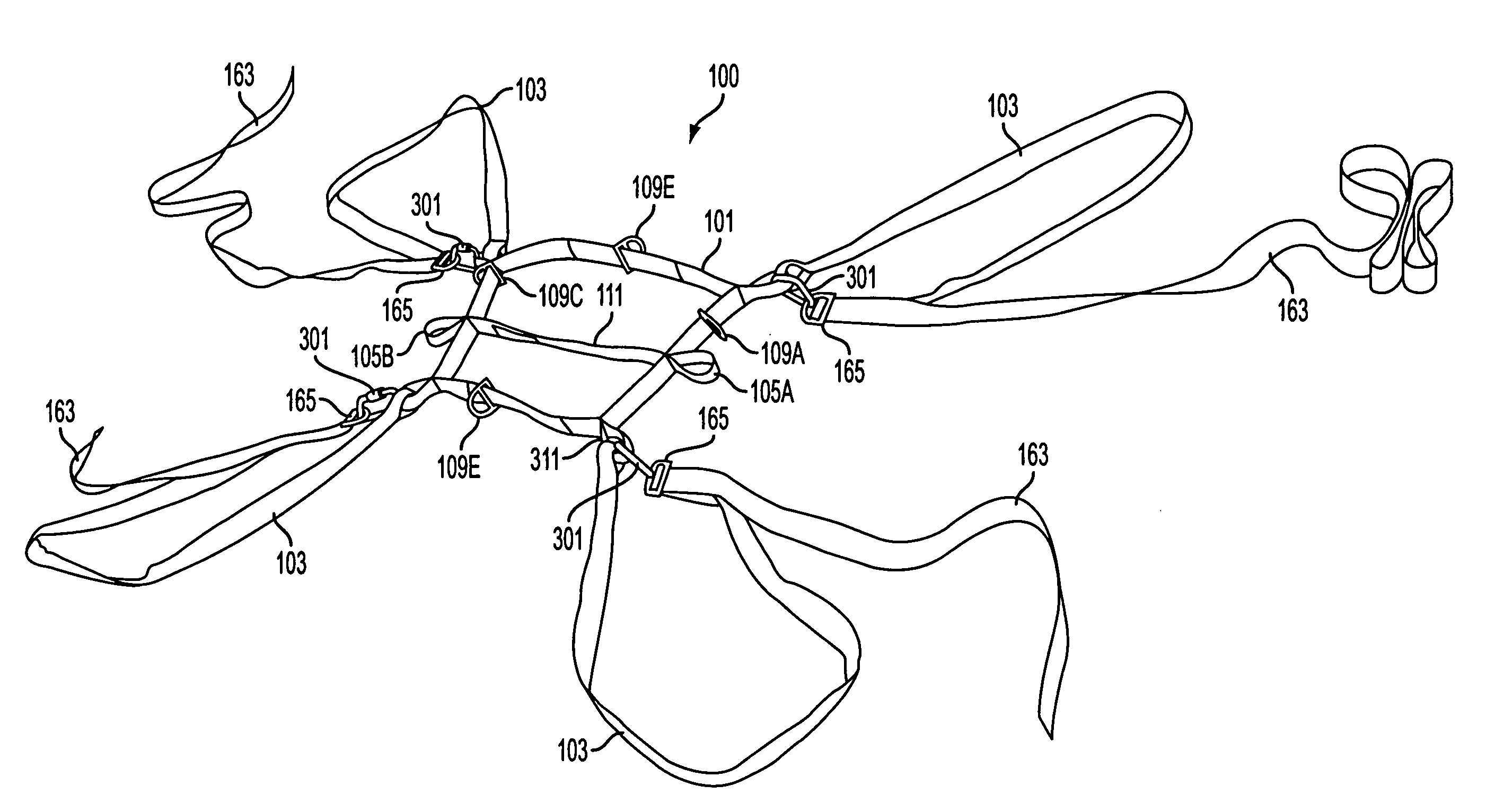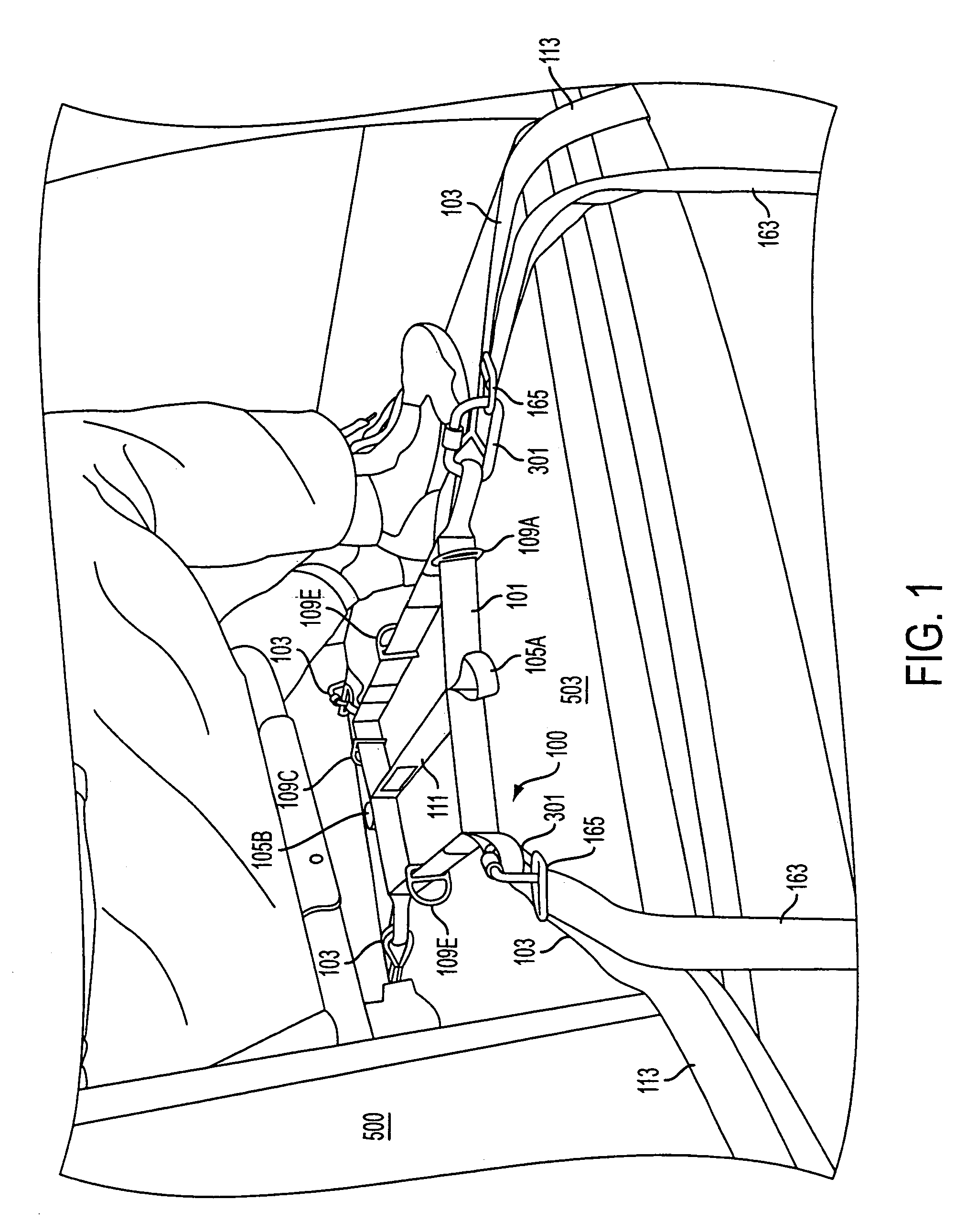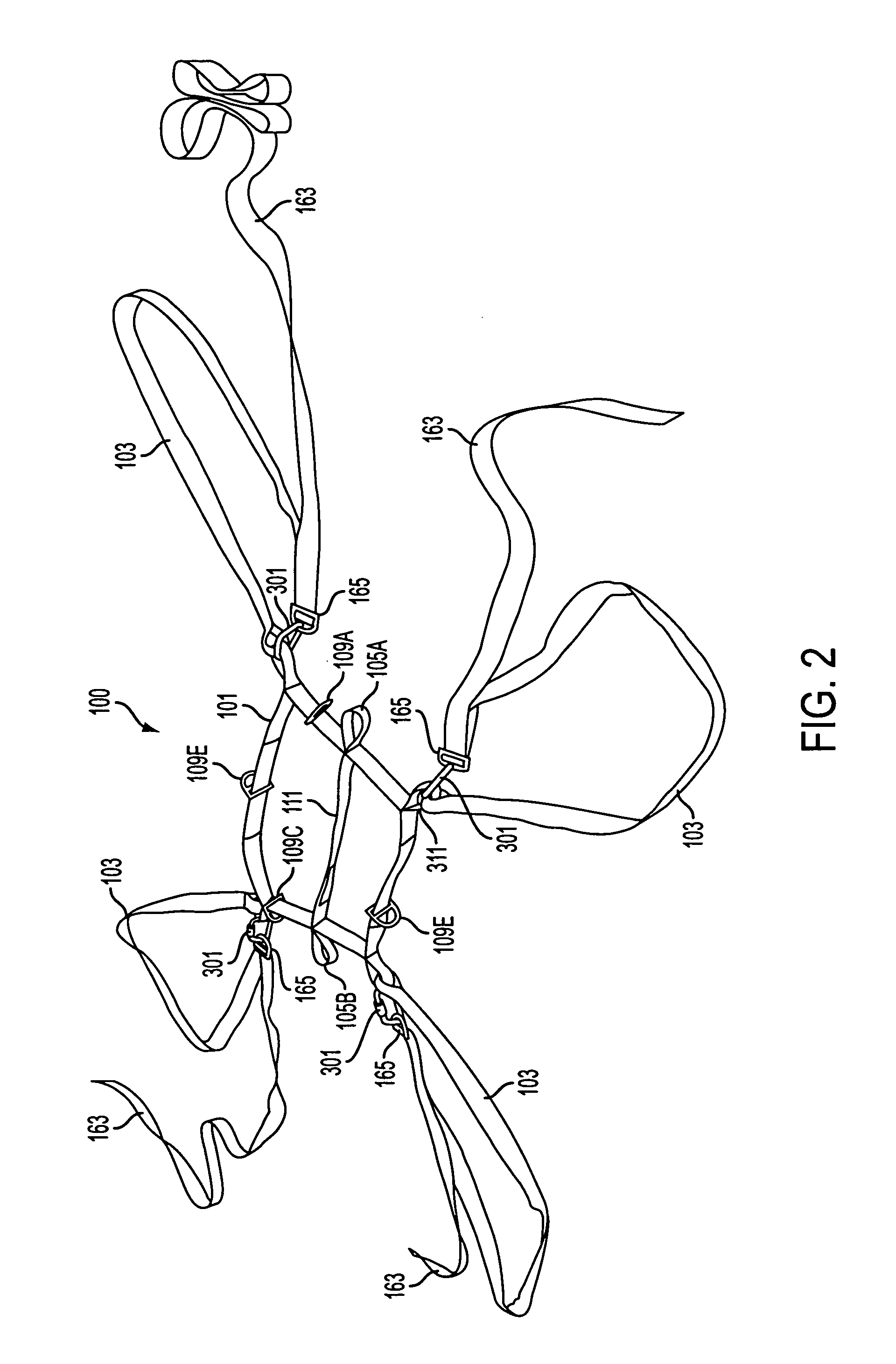Rappelling rig
a rappelling rig and rappelling technology, applied in the field of rappelling rigs, can solve the problems of inability to provide the needed medical intervention, inability to quickly reach the adventure seeker, and inability to quickly reach the person/person on foot, etc., to achieve the effect of easy transportation, fast addition or removal of a helicopter or other aircraft, and exceeding tolerances
- Summary
- Abstract
- Description
- Claims
- Application Information
AI Technical Summary
Benefits of technology
Problems solved by technology
Method used
Image
Examples
Embodiment Construction
[0028]FIGS. 1 through 6 provide views of different embodiments of a rappelling rig (100) in accordance with the present invention. The embodiments are discussed simultaneously. The rappelling rig (100) is preferably constructed of materials having a high strength to weight ratio and which can be arranged to give the rig (100) a generally thin relatively planar construction. These materials will generally be relatively thin themselves and may comprise strips of material or rope-like structures. These materials will generally be referred to herein as “straps” or “strapping materials,” and for the purposes of this disclosure, straps and strapping materials expressly includes, but is not limited to, leather or other animal hides, webbing materials, fabrics, ropes, chains, cables, bands, ligatures, wire, ribbons, sashes, plastics, or similar materials. In particular, the rig (100) is preferably constructed of strips of webbing (such as ballistic webbing), rope, strips of fabrics or other...
PUM
 Login to View More
Login to View More Abstract
Description
Claims
Application Information
 Login to View More
Login to View More - R&D
- Intellectual Property
- Life Sciences
- Materials
- Tech Scout
- Unparalleled Data Quality
- Higher Quality Content
- 60% Fewer Hallucinations
Browse by: Latest US Patents, China's latest patents, Technical Efficacy Thesaurus, Application Domain, Technology Topic, Popular Technical Reports.
© 2025 PatSnap. All rights reserved.Legal|Privacy policy|Modern Slavery Act Transparency Statement|Sitemap|About US| Contact US: help@patsnap.com



